Grin and Bearing
The journey from Luang Prabang to Vientiane would be no small feat. Â The buses would no doubt be crammed due to the Pi Mai Lao holiday, and with no bus schedule to speak of, it was simply the luck of the draw for when we would leave and what bus we would find ourselves on. Â After an incredible downpour, which took place while we were nesting in a cafe, we took to the soaked streets and wheeled up to the bus station. Â There, we bought a ticket for the next bus and folded up the cycles; the bus would be leaving in 20 minutes.
The bus was packed, but it seemed we had received the two best seats in the house, right in front, despite having purchased the last two tickets available. Â Together, we marveled at the freight loading process in which giant wire frames, motorcycles, and other cargo were hoisted to the bus roof rack.
Of course the journey would not be complete without mechanical and natural mishaps on what we referred to as “the best road in all of Lao,” a winding collection of switchbacks and washed-out embankments, 430 km through the jungle. Â The bus stopped occasionally for the crew to inspect the fuse box. Â When the bus was moving, the driver peered through the windshield, seeing no farther than a few feet in front of him because of the thick misty fog that saturated the mountain air. Â The temperature difference between the interior and exterior of the bus caused the windshield to fog up from within as well, warranting a full-time crew member to wipe down the windshield so the driver could see.
But alas, by the grace of Lao, we arrived the next morning safe and sound before sunrise. Â Coffee and a small feast seemed to be in order, so we ordered two fried whole baby chickens, rice, and the black gold we were so very much in need of.
Upon finishing, we wheeled south to the Mekong to scan the riverside for guesthouses. Â We passed the great French style archway, as morning joggers stayed honest around the park.
Wheeling a bit farther, we came across some fellows transporting pork in what seemed like the Chinese part of town.
Finally, after traipsing back and forth past embassies, we ventured down an alley and found the perfect guesthouse, which featured a large brickwork project in progress.
After settling down and unfurling ourselves in the room, we snapped into action on the day’s first order of business: Project K9. Â Our very own head of marketing and newly christened member of the team had requested “elephant” goods that could be worn or placed in the home for good luck.
In Luang Prabang, we had located items that satisfied these requirements.
First, was an elephant mask, strikingly god-like in nature.
Second was a handbag with an engraved elephantine seal,
and finally, a  peach-orange canvas bag featuring an illustrated elephant.
We wheeled to the post office, cargo strapped to our side.
There we began wrapping the goods.
Of course, the postal workers were sweet and friendly, helping us weigh and wrap the package.

After sending it off, we hit the road. Â Vientiane was crying out to be re-explored.
 We had a lot of waypoints, which had been suggested to us by the knowledgeable and judicious Mr. Stewart Motta, and only a couple days in which to hit them all. Scheduled for that day were COPE and MAG, two organizations dedicated to bettering Lao, by addressing problems created by the gargantuan bombing of that country by the US, and other destruction associated with the Laotian Civil War.
We had a lot of waypoints, which had been suggested to us by the knowledgeable and judicious Mr. Stewart Motta, and only a couple days in which to hit them all. Scheduled for that day were COPE and MAG, two organizations dedicated to bettering Lao, by addressing problems created by the gargantuan bombing of that country by the US, and other destruction associated with the Laotian Civil War.
Few people know that Lao is the most bombed country in the world. To be precise: more conventional explosives, by weight, were dropped on Lao during the US-Vietnam War than any other country in history, including Germany and Japan during WWII, or Vietnam itself during that ugly conflict. Many of them still remain unexploded in the landscape, and much of the population of Lao that survived the bombing did so by spending years of their lives in caves in the mountains while fire and thunder fell from the sky onto their beautiful homeland. And all this while, Lao was (at least officially) respected by the US as a neutral country in the conflict.
The recent history of Lao gets even hairier when you consider that in addition to extensive bombing in the south and northeast of Lao, the US CIA had taken up the old French habit of organizing small armies of Lao to fight against Communist forces in the region. You see, dear reader, the NVA was supplying its southern troops (also called the Vietcong) via an amazingly resilient supply route called the Ho Chi Minh Trail. This was a treacherous mountainous road that snaked through Vietnam, Lao, and Cambodia, and was the main lifeline of the indefatigable Communist army. The US felt it could win the war if it destroyed this supply line, which it tried and failed at, using all kinds of war machines. All this occurred at a time of internal strife and civil war in Lao, as they were too thrown asunder with the sudden end of French Imperial rule. The large and violent American part of this struggle is commonly referred to as “the secret war”, and at its height featured what some estimate to have been the busiest airport in the world at the time: a secret air strip operated by a fake civilian airline called Air America, run by the CIA. Originally, the US was training Lao Royalist troops, mostly to aid the French who were still fighting for control over Lao against wave after wave of Vietnamese troops.
Later on, after the French were soundly defeated by the Viet Cong, we began to take over more and more of their role, paying the salaries of the anticommunist part of the Lao army, and flying all kinds of equipment around using that puppet airline. The entire story is just too long and too unbelievable to fully recount here. Instead, I recommend the Wikipedia page, and also, if you can get your hands on it, a documentary called “The  Most Secret Place on Earth,†which AsiaWheeling is hard at work acquiring for distribution to you, dear reader. Also probably worth saying, before closing this fascinating tangent, is that this secret CIA-funded proxy war is only the second largest CIA-funded proxy war in US history. The largest was the Soviet-Afghan war… but that’ll have to wait for AsiaWheeling 3.0.
Meanwhile, in present day Lao, we were wheeling the streets of Vientiane in search of breakfast and a few bottles of what we were coming to call “the people’s water.†The people’s water is commonly the cheapest way to buy bottled water in Lao and Thailand.
It is packaged in semi-translucent malleable plastic rip-top bottles, and if you buy enough of it at once, it ends up being only a few cents for each bottle. Finding the people’s water was easy; and after drinking a few of them down, we were ready to find noodles, which also in time presented themselves to us, after a fair bit of wandering, in the form of the Chinese style of chewy freshly stretched street noodles. Ah noodles, the fuel of AsiaWheeling.
Not long into our wheel, Scott’s bicycle started to complain somewhat more vehemently in the front wheel-piece. Though we had much to do, we decided we had better stop and take a closer look. We flipped Scott’s Speed TR upside down on the side of the road and began to spin the front wheel by hand and scrutinize it. It would randomly emit this pinging noise, however, as far as we could tell, nothing was in the way of the wheel or the spokes; we concluded it must be the hub of the wheel itself.

Feeling dark and troubled, we climbed back on the Speed TRs and went off in search of a Lao bike mechanic. Soon we found one who was really more of a bike parts dealer. He agreed to take a look. We spun the wheel around and he began to peer into its depths. Not too long into his inspection, he decided that the explanation lay in a certain scuffed up bit of the fender that he claimed was being pulled into the wheel as it spun.
It was a strange diagnosis, but we were glad to hear it was not a big deal; we bent the fender a bit and kept wheeling. Somewhere into the wheel, the noise started up again at new heights of sound and fury. It was definitely not the fender. We flipped the bike over again and removed the wheel. This time, with the wheel some feet away from the rest of the bicycle, Scott was able to spin it while I was holding the axle pegs, and it still made the sound. This was bad… something inside the dynamo hub was very sick…
So we returned to the same mechanic, and began to remove the wheel, bringing it over to him. The man spoke no English, but communication seemed fluid enough as we mimed and pointed to bits of the wheel. He seemed to immediately realize his previous mistake, and grabbed a few wrenches to began to tear the wheel apart. Some way into the process, he discovered confirmation of a new diagnosis. He looked up at us.
“Bad bearing.â€
This was as much English as the man would ever speak to us. We’ll never know how much he spoke or understood, but we did buy a bike lock from him as a kind of thank you, and to relieve us of the constant hassle of the Indian lock we had bought, which had gradually grown a number of sharp pointy spikes, threatening to slice all those who dared use it. We named the new lock “Cambodia,” since we had been told to lock the bikes more securely while in Cambodia. We named the old lock “Barack Obama,†after his highness.
All new locks and final diagnoses aside, we had a problem on our hands, and it was time to solve it.
Sometimes, dear reader, AsiaWheeling has to switch into Crisis Mode. Now was one of those times. It was still a holiday here in Lao. Tomorrow was Sunday, and we were planning to leave for Cambodia on Monday. This meant we needed to fix this wheel tomorrow.
Over one of those delightful Lao baguette sandwiches, we began to hatch a plan.
Tonight we would establish and draw up a map of all the cycle shops in Vientiane. Tomorrow we would rent a bicycle from the Heuan Lao Guesthouse and strap Scott’s wounded wheel to the back of it. We would then wheel the city in search of:
a) A bike shop that would repair the wheel
b) A bike ship that would sell us a new 74-mm (20-inch) wheel, or hub. In the event that we could not find these, we would move to plan c)
c) Go to Bangkok the next day and refit the old hub left at ProBike, the local Dahon retailer, to the new rim.
A little Googling suggested that our best bet would be a fellow by the name of Willy, who worked at a bike shop not far from the parts guy who had diagnosed our problem. With maps drawn, and fingers crossed we reserved a rental bike for the next day, set our alarm for sunrise, and prayed.
![]()





















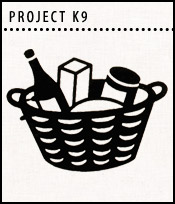
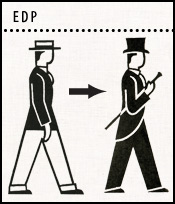
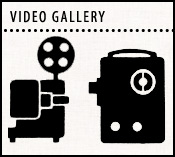
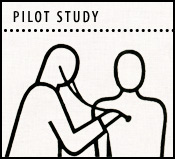
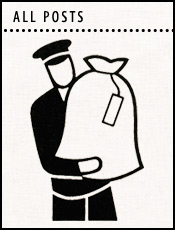
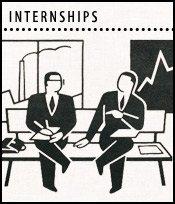




Comments
Awesome post! I enjoyed the history of Lao, and of course the history of my K9 treasures. Thank you for providing me with such beautiful elephantine pieces of Asia.
The “secret war” is quite a story, and it’s great that you are introducing it to all of us. For most of us the Vietnam War era is a general feeling, with various images and personal vignettes we associate with it, but, we weren’t in the midst of it (at least I wasn’t), and the incredible resilience of the Lao and the our audacious exploitation of the entire situation (for our own gain?) is a story most of us have not heard or have forgotten.
Scott’s bike seems to have a special need for attention! But, I guess that’s what AsiaWheeling is about: the unexpected.
Safe travels (have you started wearing your helmets yet?)